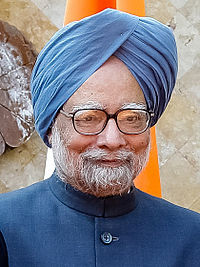You’re walking down a busy street on a sunny afternoon, when you see someone who stands out from the rest of the crowd- it’s a young man, maybe about 24 or 25, and he’s wearing a distinct head covering that you’ve seen on TV before… a turban? You’ve seen people wear them before, but you don’t really know why they wear them or where the people are from. Maybe from some Arab country? Of course, they cannot be from here, right? Quickly disregarding your thoughts, you continue on with your daily life- you can’t be late for your coffee date at Panera Bread. Little did you know, there’s a 99% chance that man is a follower of the fifth largest organized religion in the world- Sikhism.
To give some perspective, there is an estimated 27 million Sikhs in the world, while there are approximately 14 million Jews. Yet, according to studies done by the National Sikh Campaign, 60% of American admit to knowing nothing about Sikhs. Many have barely even heard of the religion before. The same studies have reported that more people assume that members of this religion are Muslim or Hindu, when asked to identify Sikhs.
A monotheistic religion, Sikhism preaches equality for all people regardless of gender or background, which actually was an unconventional idea when the religion was first founded in the 1500s. One main pillar of the religion is to keep one’s hair uncut, as included as one of the 5 K’s (Kesh, meaning uncut hair, Kanga, a comb, Kara, steel bracelet, Kacha, clean undergarments, and Kirpan, a steel dagger used to defend others in times of trouble). Since orthodox followers of the religion do not cut their hair, many keep it tied up and kept under a turban, a cloth head covering, or neatly tied in a long braid. The turban is worn for many different reasons all over parts of Asia and Africa, but in the early 1500s on, it was a sign of royalty. Members of the religion primarily started wearing it to preserve a Sikh identity and to promote equality, meaning it doesn’t matter if one is a king or one is a peasant- everyone is equal. To many, the turban isn’t just a turban; it’s a crown. Although a peaceful religion, Sikhs are harassed and assaulted in America due to blatant ignorance and lack of knowledge about their customs. Often times, many associate the turban with the radicals of the Middle East that are harshly depicted by the media. To be blatant, when an uninformed American sees a turban, they don’t think of a peaceful Sikh- their mind jumps to the image of Osama Bin Laden wearing a similar head covering. This leads to many Sikhs being targeted and assaulted by ignorant and usually fearful people who believe they’re radicals. However, almost all people who adorn the turban in America are Sikh. Sikh children and teens are now twice as likely to bullied or harassed in school than the average student, especially those who keep their hair under a turban or patka, a head covering that most young boys wear before wearing a turban,.
In a country that proclaims righteousness, justice, and freedom of religion, people are still being targeted because of their background and religion; hate crimes against innocent Muslims, Sikhs, and other Arab passing minorities have increased profoundly ever since the 9/11 attacks at the World Trade Center. It’s evident even in recent American politics that Islamophobia continues to prevail, with candidates for the 2016 presidential election like Ben Carson making comments like “I would not advocate that we put a Muslim in charge of this nation. I absolutely would not agree with that.” Donald Trump, of course, has also assisted in contributing to this negative and islamophobic attitude, saying “You can say there are no problems with the Muslims,” he continued, “there’s no problems, no terrorism, no crime, they didn’t knock down the World Trade Center. You know, the people who knocked down the World Trade Center, they didn’t fly back to Sweden.” Carson’s blatantly intolerant comment and Trump’s sardonic tone towards Muslims arouses the question: How has it become appropriate to blame entire groups of people for the actions of a few? And why are people continuing to justify their hateful opinions driven by ignorance and intolerance? Even in the land where our “founding fathers” established a country where “anyone” had a right to practice their religion, many people continue to live in fear of practicing their religion openly. Although a lot of Sikhs cut their hair out of choice, others cut their previously unshorn hair in fear of being targeted, hurt, or even killed for simply wearing a turban- a symbol of their faith. This is supported by the fact that only 4 days after the 9/11 attacks at the World Trade Center in NYC, Balbir Singh Sodhi, a 49 year old Sikh, was shot and killed by Frank Silva Roque, who upon arrest said “I’m a patriot and an American. I’m American. I’m a damn American.” Sodhi is not the only instance where Sikhs have had to experience and endure hate crimes; countless incidents have happened all over the nation. One of the most infamous the shooting in Oak Creek, Wisconsin at a Gurdwara, a Sikh place of worship, in 2012, where 6 innocent people were shot and killed by a white supremacist army veteran. Has American patriotism really come to the point that one must kill innocent people to defend their national pride?
What’s happening is not right. A big cause of it is due to ignorance of the incredibly diverse groups that have yet to be represented in American media. People do not understand that the radicals involved in the 9/11 attacks represent a very miniscule number of Muslims, and they absolutely do not represent the majority. Yet, Muslims face religious profiling, prejudice, and harassment and many Sikhs who are thought to be Muslims are targeted too. No one should be assaulting or harassing anyone because of the religion they practice, regardless of whether it’s Christianity, Islam, or Sikhism and people are ignorantly hurting minorities such as Sikhs without even knowing anything about them or educating themselves on things such as “Why does that man wear a turban?” or “Why doesn’t she cut her hair?” We need to make people more open to diversity and acceptance, and most importantly talk about these differences and celebrate them.
Now, more than ever, many Sikhs are making efforts to have their voices heard, to represent this marginalized group of people, and to educate others about the religion. I’m one of them. Growing up in a Sikh household myself, I’ve seen and experienced the injustices that many Sikhs have had to face because they are stereotyped and labeled. I’ve seen the faces of young boys who adorn the patka recount their traumatizing experiences with other children who don’t understand their head coverings, and who have to deal with damaging slurs such as “Raghead” and “Bin Laden”. When they finally grow the strength to talk about it, they’re brought to tears. I’ve encountered girls who feel pressured to cut their hair or shave their legs, fearful that they’ll be picked on by other girls and boys if they don’t. All their childhoods, many Sikh children endure having the chance of being outcasted for having different customs and backgrounds; as they grow older, they see the others who are killed for having different customs and backgrounds. It’s wrong, and these events can scar any young child who simply wants to feel like they belong to the country they grew up in. In a land where liberty and tolerance is preached and repeated countless times, the message seems to not have gotten across to people yet. And it’s not only up Sikhs to tell others of our existence, but also people like you, the readers, to make an effort to learn and listen. Only then, will our voices be heard.










